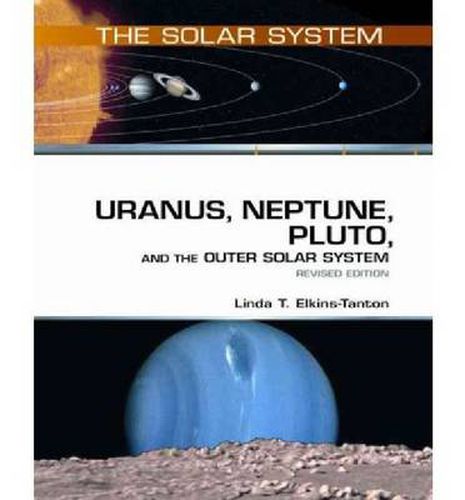Readings Newsletter
Become a Readings Member to make your shopping experience even easier.
Sign in or sign up for free!
You’re not far away from qualifying for FREE standard shipping within Australia
You’ve qualified for FREE standard shipping within Australia
The cart is loading…






Unlike all the planets closer to the Sun, known since antiquity, the farthest reaches are the discoveries of the modern world. Uranus was discovered in 1781, Neptune in 1846, Pluto in 1930, the Kuiper belt group of objects in 1992, and though the Oort cloud has been theorized since 1950, its first member was found in 2004. The discovery of the outer planets made such an impression on the minds of mankind that they were immortalized in the names of the newly discovered elements: uranium, neptunium, and plutonium, an astonishingly deadly constituent of atomic bombs.
Uranus, Neptune, Pluto, and the Outer Solar System, Revised Edition enters the farthest reaches of the solar system, including the distant gas planets Uranus and Neptune as well as the regions of asteroids and comets known as the Kuiper belt and the Oort cloud. Updated with new research and scientific findings, this full-color resource investigates theories about their formation and evolution as well as the bodies in distant regions and how they interact with the inner solar system and the stars outside this solar system.
Chapters include:
Uranus: Fast Facts about a Planet in Orbit
The Interior of Uranus
Surface Appearance and Conditions on Uranus
Rings and Moons of Uranus
Neptune: Fast Facts about a Planet in Orbit
The Interior of Neptune
Surface Appearance and Conditions
Neptune’s Rings and Moons
The Discovery of Pluto and the Kuiper Belt
Pluto: Fast Facts about a Dwarf Planet in Orbit
What Little Is Known about Pluto’s Interior and Surface
Charon: Pluto’s Moon, or Its Companion Planet?
The Rest of the Kuiper Belt Population
The Nice Model for Kuiper Belt Formation
The Oort Cloud
Conclusions: The Known and the Unknown.
$9.00 standard shipping within Australia
FREE standard shipping within Australia for orders over $100.00
Express & International shipping calculated at checkout
Unlike all the planets closer to the Sun, known since antiquity, the farthest reaches are the discoveries of the modern world. Uranus was discovered in 1781, Neptune in 1846, Pluto in 1930, the Kuiper belt group of objects in 1992, and though the Oort cloud has been theorized since 1950, its first member was found in 2004. The discovery of the outer planets made such an impression on the minds of mankind that they were immortalized in the names of the newly discovered elements: uranium, neptunium, and plutonium, an astonishingly deadly constituent of atomic bombs.
Uranus, Neptune, Pluto, and the Outer Solar System, Revised Edition enters the farthest reaches of the solar system, including the distant gas planets Uranus and Neptune as well as the regions of asteroids and comets known as the Kuiper belt and the Oort cloud. Updated with new research and scientific findings, this full-color resource investigates theories about their formation and evolution as well as the bodies in distant regions and how they interact with the inner solar system and the stars outside this solar system.
Chapters include:
Uranus: Fast Facts about a Planet in Orbit
The Interior of Uranus
Surface Appearance and Conditions on Uranus
Rings and Moons of Uranus
Neptune: Fast Facts about a Planet in Orbit
The Interior of Neptune
Surface Appearance and Conditions
Neptune’s Rings and Moons
The Discovery of Pluto and the Kuiper Belt
Pluto: Fast Facts about a Dwarf Planet in Orbit
What Little Is Known about Pluto’s Interior and Surface
Charon: Pluto’s Moon, or Its Companion Planet?
The Rest of the Kuiper Belt Population
The Nice Model for Kuiper Belt Formation
The Oort Cloud
Conclusions: The Known and the Unknown.